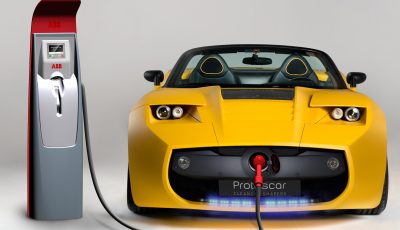The EU says it is time for tides to provide energy for Europe from the Atlantic and end reliance on the burning of polluting fossil fuels.
LONDON, 11 May, 2015 − A race is on worldwide to harness the tides and waves for electrical power, with more than 100 different devices being tested by companies hoping to make a commercial breakthrough.
And a new report from the European Union’s Joint Research Centre expresses confidence that the Atlantic Ocean will soon be an important contributor to the continent’s energy mix.
It adds that many other countries with big tidal ranges and long coasts are also banking on this form of renewable energy to help reduce fossil fuel use.
For years, it has been predicted that the vast quantities of energy available in the oceans would be harnessed by human ingenuity to provide without the need for burning fossil fuels, but progress has been slower than expected.
Different techniques
While it has proved possible to generate electricity with many different techniques, scaling these up into large-scale power stations to supply the electricity grid has not so far been economic.
The two most promising basic ideas are to use the currents and the build-up of water at each tide to drive turbines to make electricity, or to convert the power in wave motions to energy.
In Europe, the countries with Atlantic Ocean coastlines – such as the UK, Ireland, France, Spain, Portugal, Denmark, the Netherlands and Norway – are all developing technologies. And in 2014, the EU launched what it called its Blue Energy Action plan to finance and encourage development. The latest report details progress so far.
Most of the technologies are not new ideas, but the trick is turning a demonstration model into a viable power station.
The one exception is tidal energy in the form of a barrage across a river, which has been in use for years.
The best known is the 240 megawatt (MW) La Rance tidal barrage in France, operating successfully since 1966. Another 254 MW tidal plant has opened in Sihwa in South Korea, and other barrages producing at total 2,680 MW are planned worldwide − although many have proved controversial because of their effects on fish and birds.
Tidal lagoons − reservoirs that stand in an estuary or close to the shore, and which fill and then empty with each tidal cycle − have now won much more favour, and one is being developed in Swansea Bay in south Wales.
The worldwide potential of this technology is estimated at 80 gigawatts (GW), or the equivalent of 80 large coal-fired power stations.
Already in successful operation at some sites, but yet to be scaled up to full commercial development, are underwater turbines − similar to wind turbines − that use the energy in tidal streams to make electricity.
In Europe, these devices will be viable in countries with high tides and strong tidal streams − particularly France, Ireland, Norway and the UK, but also in some parts of Belgium, Italy and the Netherlands. These are believed to offer the highest net potential contribution to the European energy system, according to the report.
The first large-scale tidal array is being built in the Pentland Firth, off northern Scotland. It will provide power to 175,000 homes.
New connections
Like the deployment of wind farms, potential tidal power arrays are often in remote locations far from cities. The report points out that these technologies will require new grid connections and integration into the European grid to get most value from them.
A new generation of devices not placed on the sea bed, but either floating like kites on a string or operating from platforms, is under development. Their advantage is that they avoid the cost of being built on the sea bed, and can also exploit the greater strength of the tides nearer the surface of the sea.
Some of the materials being used to build devices to withstand the power of the sea, and the methods that are being used, are being kept secret for commercial reasons, but they have some of the biggest companies in Europe as their backers.
The commercial advantage of tidal devices is that the tides are predictable years in advance
Another new generation of micro-turbines, owned by coastal communities and anchored offshore to take advantage of tidal flows, is under development. These could give communities isolated from the grid their own power source, like solar panels do in remote parts of Africa and Asia.
There are an estimated 100 companies developing tidal energy devices worldwide, half of them in the EU, where many are supported by development grants. Four tidal energy stations are already in operation in Europe, and another 31 are expected to be completed by the end of 2016. Many more are in the planning stage.
The commercial advantage of tidal devices is that, unlike some other forms of renewable energy, the tides are predictable years in advance. Wave power, on the other hand, suffers because of its unpredictability and the need to make devices robust enough to stand up to the battering they receive.
Potential supply
That has not stopped a large number of development projects being built, principally because the potential energy supply is vast – 30 times higher than tidal energy.
Some devices have already been operating successfully for 10 years, producing regular quantities of electricity, but they were built as demonstration models and not on a commercial scale.
Building structures large enough to produce a regular power supply at a cost that could be commercial has proved elusive, but the report describes a number of devices that are close to achieving commercial viability.
There are at least nine different technologies using wave power, and 170 wave energy developers worldwide.
The report also discusses technologies that use the different gradients of salinity in the sea to produce power, and the different water temperatures to generate energy.
However, it argues that both these ideas, while viable in theory, are further away from commercial operation in Europe than tidal stream or wave power. – Climate News Network


 By
By 




